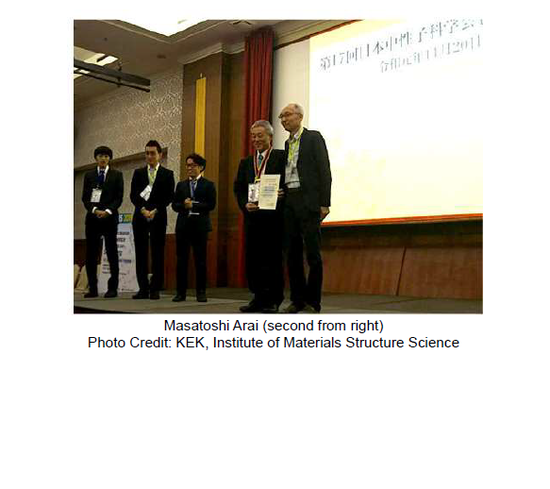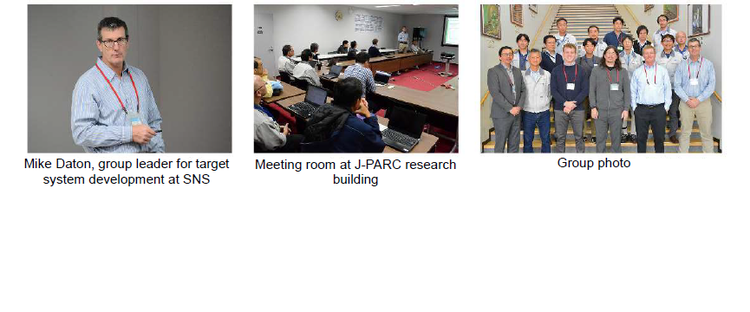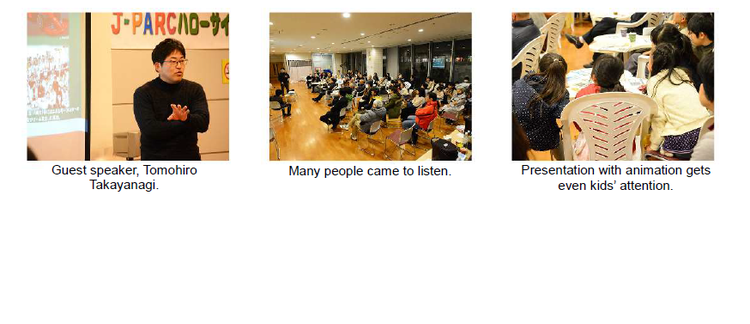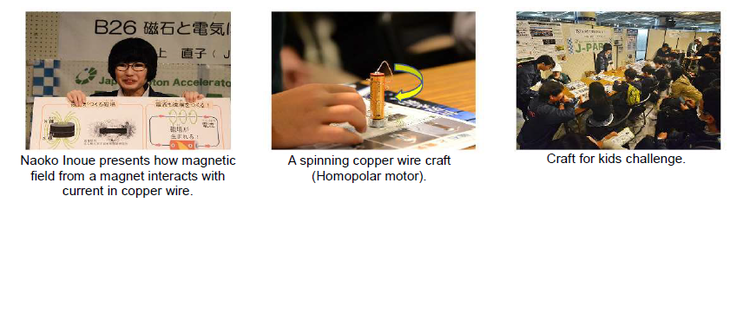J-PARC NEWS December 2019 (Issue #176)
■ Masatoshi Arai (Former Head of the Materials and Life Science Division) Receives Achievement Award at the 17th Meeting of the Japanese Society for Neutron Science (November 20, Kenting, Taiwan)
The 2019 general meeting of the Japanese Society for Neutron Science was held in Kenting, Taiwan, and Dr. Masatoshi Arai—former Head of the Materials and Life Science Division and currently Professor Emeritus of KEK and Technical Coordinator of ESS-ERIC*—received an Achievement Award. This award is presented to a person with noteworthy achievements in developing neutron science in Japan, and Dr. Arai was recognized for his consistent efforts in instrument development and facility construction/operation relating to pulsed neutron scattering. The award recognizes Dr. Arai's "pioneering research and leading role in the use of pulsed neutrons." Dr. Arai has been involved with J-PARC since its planning stages, and made tremendous contributions to J-PARCs construction and operation. He has worked as an organizer in difficult situations such as reconstruction after the Great East Japan Earthquake.
*An experimental instrument for neutrons under construction in the city of Lund, Sweden (European Spallation Source)
■ Held Meeting of T2K Collaboration (November 18–22, IQBRC)
On November 18–22, a meeting of the T2K Collaboration was held at the Ibaraki Quantum Beam Research Center (IQBRC). The beam for the T2K experiment had been shut down for about a year and a half, and data acquisition was resumed on November 5. The meeting began with reports on the operating situation of each detector, and soundness checks of detectors using data acquired immediately after resumption of the experiment. There were also reports on improvement of data analysis methods using various ideas, and progress of plans for achieving high-intensity compatibility of neutrino production facilities, and upgrading of near detectors, scheduled at J-PARC for 2021. Furthermore, there was a report on an SK-Gd Plan for improving performance by incorporating gadolinium (Gd) into the Super-Kamiokande (SK) neutrino detectors in Kamioka-cho, Gifu Prefecture.

■ Held Meeting on Research Cooperation between SCK•CEN and JAEA (November 27, J-PARC)
Dr. Eric van Walle is Director-General of the Belgian Nuclear Research Centre (SCK•CEN)—the organization in charge of the construction project for MYRRHA, a Multi-purpose hYbrid Research Reactor for High-tech Applications using an accelerator-driven system (ADS). On November 27, a seven-person team from SCK•CEN, including Dr. van Walle, visited J-PARC and discussed research cooperation with Yukitoshi Miura (Executive Director), Hiroyuki Oigawa (Director General, Nuclear Science Research Institute) and Akira Endo (Director General, Nuclear Science and Engineering Center) of the Japan Atomic Energy Agency (JAEA), and Naohito Saito (Director, J-PARC Center) and other staff from J-PARC. The meeting participants discussed various topics for strengthening the cooperative relationship in the future, including more active exchanges of personnel including young researchers, promoting cooperation in the field of ADS (including lead-bismuth, irradiation, and accelerator technologies), possibility for strengthening research cooperation between SCK•CEN and the JAEA in a wide range of fields other than ADS, and possibility for cooperative arrangements between SCK•CEN and J-PARC. In their site tour of J-PARC, the visitors learned about the MLF, Neutrino Experimental Facility, and the lead-bismuth test loops of the Nuclear Transmutation Group.
■ Held 19th Collaboration Meeting for the Muon g-2/EDM Experiment (December 2–5, J-PARC)
A collaboration meeting was held on December 2–5 for the experiment (E34), planned at J-PARC, to precisely measure the muon's anomalous magnetic moment (g-2) and electric dipole moment (EDM). The Muon g-2/EDM experiment is an international collaborative research project with about 100 participants from seven countries, mainly from Japan, South Korea, China, Russia, Canada, France, and the U.S. This was the 19th meeting, and there were roughly 50 participants, including those who attended through teleconferencing, and many young researchers were seen at the venue. On the first day, there was a mini-school on the experiment. On the afternoon of the second day, there was a report on progress of the meeting as a whole—also serving as a research meeting on S-type issues at the KEK Institute of Materials Structure Science—and discussion of research plans for the future. On the morning of the second day, and the days 3 and 4, there were detailed reports by each subgroup, accompanied by lively discussions.
■ Held Collaboration Meeting between SNS and J-PARC on Nuclear Spallation Neutron Sources (December 10–13, J-PARC)
From December 10 to 13, a collaboration meeting was held by researchers involved with neutron sources at the Spallation Neutron Source (SNS) of Oak Ridge National Laboratory (ORNL) in the U.S. and the Materials and Life Science Experimental Facility (MLF) of J-PARC. The SNS and J-PARC neutron source both use mercury as the target material, and face similar problems with system equipment, such as handling higher output at the target container containing mercury, and dealing with neutron moderators/reflectors and cryogenic hydrogen circulation systems. Therefore, information has been exchanged continually between the two organizations. In August of this year, the J-PARC Center agreed to new arrangements on research cooperation with the U.S. Department of Energy, for development of high-output neutron sources for spallation, and related fields. As a result, there was a particularly lively exchange of views on specific areas of research cooperation for the future.
■ Information Exchange Meeting on High-Intensity Proton Linacs between CIAE and J-PARC (December 11, J-PARC)
On December 11, a five-person delegation visited from the China Institute of Atomic Energy (CIAE) and China National Nuclear Corporation (CNNC), including Vice President Jiang Xingdong of the CIAE, and an information exchange meeting was held on high-intensity proton linacs with the persons in charge of accelerators at J-PARC. The meeting began with messages from Mr. Jiang and Naohito Saito, Director of the J-PARC Center. Next were overviews of CIAE and CNNC, and explanation of accelerator plans at CIAE. From the J-PARC side, the people in charge explained the current situation of accelerators. After that, the visitors toured the central control room, linac, and Materials and Life Science Experimental Facility (MLF). To conclude, there was an exchange of views.
■ Creating High-Intensity Beams! —A Story of Electricity and Magnets—(November 29, Tokai-village Industry and Information Plaza "iVil")
At a Hello Science event on November 29, Dr. Tomohiro Takayanagi of Accelerator Section II spoke about accelerators at J-PARC. Dr. Takayanagi is engaged in development of the bump electromagnets installed in the beam injection section of J-PARC's second-stage circular accelerator, a 3 GeV synchrotron. A bump electromagnet is an important component for taking an injected beam into the 3 GeV synchrotron from the first-stage accelerator (linac). Dr. Takayanagi explained that J-PARC is a facility which employs a world-class high-intensity proton beam to produce secondary particles used in various experiments. He also explained topics like the features of the linac and 3 GeV synchrotron in a very easy-to-understand fashion using animations. All the attendees, from adults to preschool children, listened intently while watching the slides with keen fascination.
■ 19th Youngsters' Science Festival, Hitachi Event —Are Magnets and Electricity Friends?!— Single-Pole Motor Project and Experiment (December 1, Hitachi Civic Center)
The Youngsters' Science Festival is sponsored by the Japan Science Foundation, and is held in regions throughout Japan to create an environment where the younger generation is familiar with science and technology. Local universities, high schools, and many companies and groups participate in each Hitachi Event. The aim is to show children the wonder and interest of science, and the thrill of making things, through fascinating science experiments, project classes, and other activities. This year, the J-PARC Center presented a project/experiment with a single-pole motor, in which a copper wire spins around a dry-cell battery placed on top of a magnet. The copper wire spins due to force resulting from the flow of current to the location where the force of the magnet is acting. It was pointed out that large numbers of magnets using the same principle are used in J-PARC accelerators. The children were engrossed in their projects, trying out various copper wire shapes until their motors spun well.
■ 7th Koshien Science Championship for Juniors (2019) —Gauss Accelerator Demonstration— (December 8, Tsukuba International Congress Center)
In the Koshien Science Championship for Juniors, teams composed of six junior high school students, selected at qualifying trials in the 47 prefectures of Japan, compete in problem solving ability while using their skills in communication, making things, and other areas. The competition has both written and practical events. This year, the event was held at the Tsukuba International Congress Center on December 6–8, and to raise awareness of the J-PARC Center, we presented a demonstration of a Gauss accelerator, and an overview of accelerators and research at J-PARC, at the exhibition on the 8th. These outstanding junior high school students, gathered from all over Japan, have an extremely keen interest in science, and more than 250 junior high school students, their accompanying teachers, and others visited the J-PARC booth. Many students were seen gasping with surprise at a steel ball increasing its speed due to the magnets of a Gauss accelerator, and listening enthusiastically to the explanations by J-PARC.







